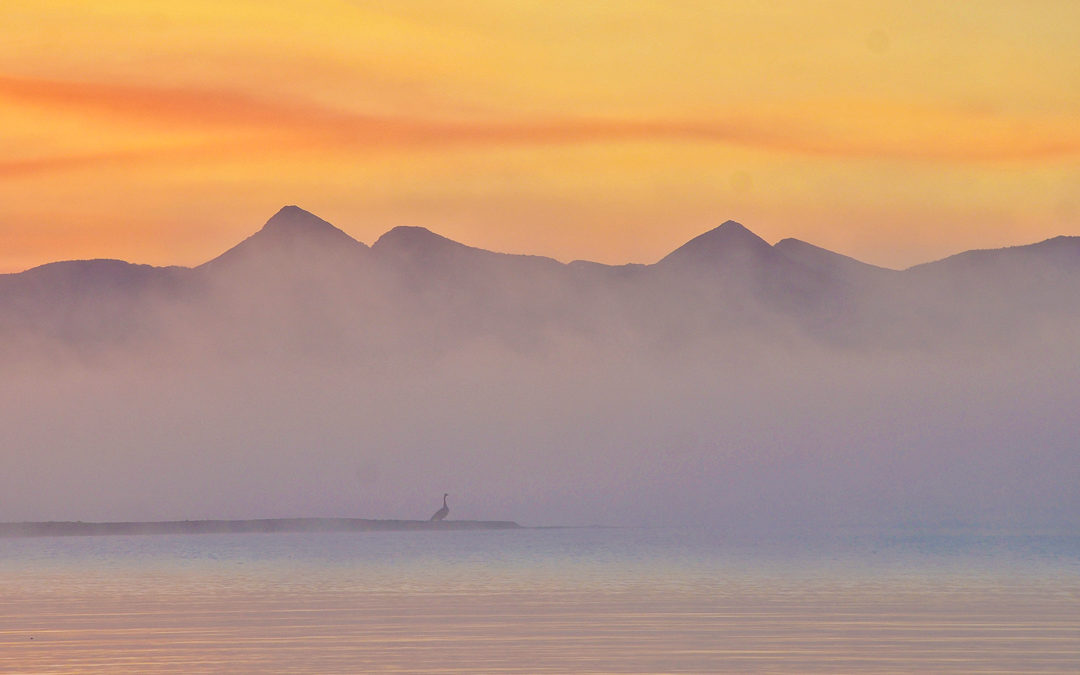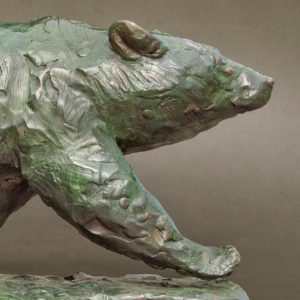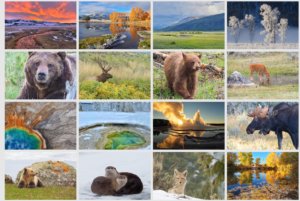The best laid plans…don’t always turn out the way you expect. In some cases, they turn out even better.
George and I (Jenny) had planned an epic backpack from the south boundary of Yellowstone 145-ish miles home together, while little G was visiting grandma. We trained and planned and prepared, all while watching and debating and wondering if it would come to pass amid all this Covid-19 craziness.
So much seemed stacked against it: if any of us or our circle got sick it was done for. If there was another shutdown it was done for. If grandma or anyone she knew got sick it was done for. Finally, one week before departure, New York state added Montana to their list of quarantined states. We called off the hike, and the visit to grandma’s.As the resident planning wizard, I scrambled to make alternate plans, and knew one thing above all else: we had to be in the wilderness. So we switched course and lined up an 11-day canoe trip paddling Yellowstone Lake instead. As a family, we paddled 74-ish shoreline miles from Grant Village to Sedge Bay.
Truly, being in the backcountry is like entering an entirely different dimension. A world parallel to ours, yet so far apart. What ensued was one of the most wonderful, necessary, and magical times together as a family.
Day 1: The Yellowstone Lake Journey Begins
Leaving early from Grant Village (on the water by 7:21am) pays off, sort of. We are in camp by 10:30am! We weren’t really planning to get to camp so early, but the wind started by the time we were only about 20 minutes form the boat launch. It was a pain at first, waves parallel to the boat and shore made for tricky maneuvering, but once we rounded the corner from West Thumb towards Breeze point the wind was largely behind us.
Ultimately, we traveled about three miles per hour, including stops! I was sad to quit paddling, we could have done a longer day, but we make the best of it.
Our campsite is tucked in back in a little cove behind a long, sandy spit. There’s a little grassy beach at the shore, and a cove deep enough for swimming. Once we get everything unloaded, Little George wants to take the boat out by himself, and George lets him. I express typical mom-caution, but George urges me to let him try, considering it is a small protected cove where it would be easy to help him. And don’t you know, he did pretty well!
What a proud and joyful moment to see our boy out there on the sun dappled water manning his own boat. His focused and earnest manner, setting on the gunnels with this right knee braced sideways, he is ever the picture of the little sea captain. I say as much to George, who says “it makes my nose tickle.” The two of them spend the rest of the day practicing swamping the canoe and righting it again.
This trip will be good for each of us, in so many ways. We are laughing and teasing each other almost immediately on our arrival at the marina, a contrast from the constant getting on each others’ nerves cooped up at home. The joy on big George’s face, the way LG notices subtle patterns on the water, make it seem like the trip was a good decision.
Clockwise from top left: Little George ponders why “thumbs” are next to “arms” and other Yellowstone Lake terminology, rounding towards Breeze Point, curious mule deer in camp, exploring the bay near our first campsite, a new friend at our snack stop, and sunset over the Absaroka’s.
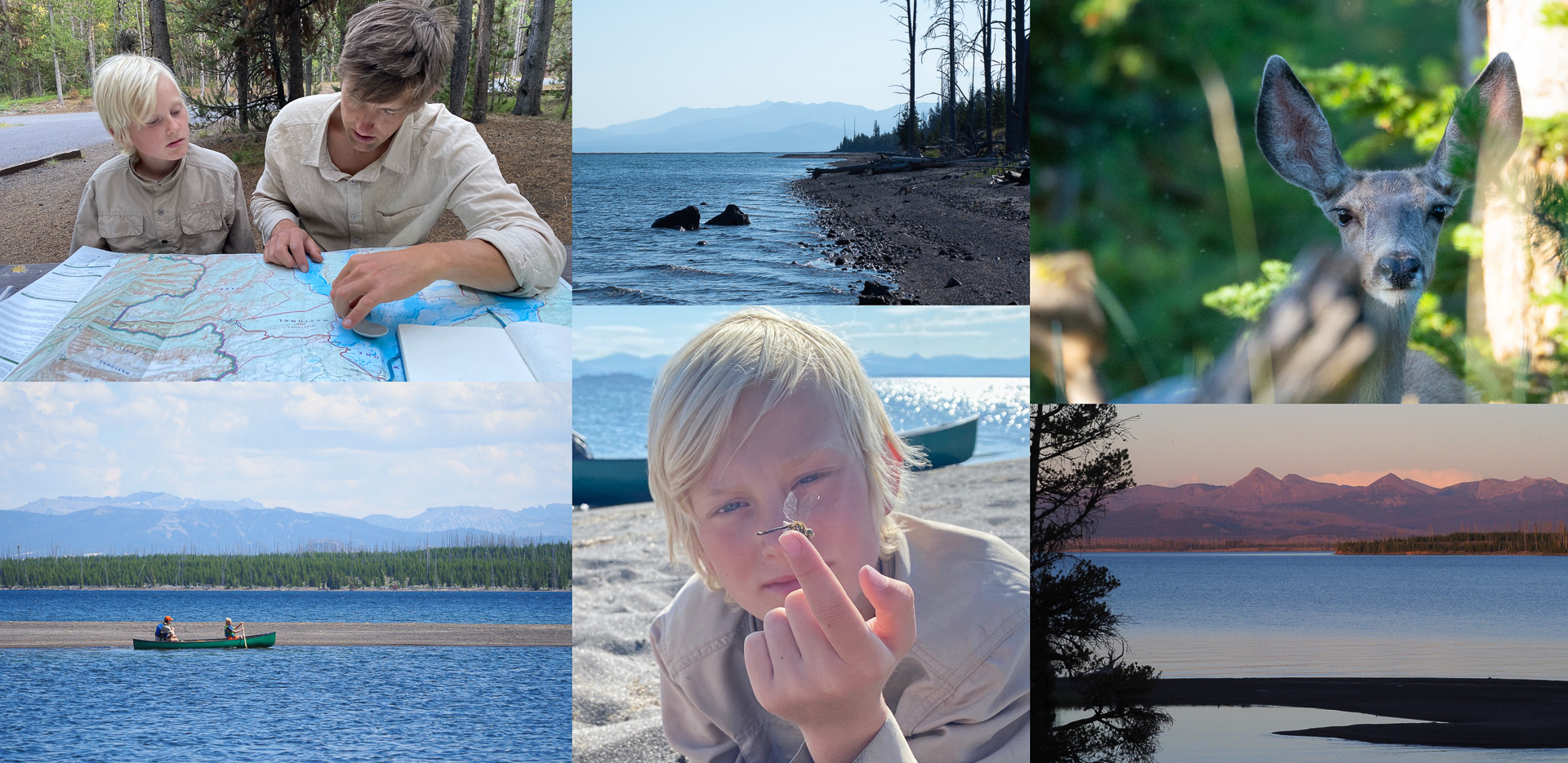
Day 2: Mom Drops Her Phone In the Lake…
The day daws almost painfully beautiful, one of the most spectacular sunrises I’ve seen, as purple, pink, and mango hues illuminate the mist and the still water and the mountains beyond, amid the soft morning honks of geese.
We are on the water by 7am, in order to reach our next camp before the usual southwest waves make paddling dangerous. It’s smooth sailing, the water glassy and gorgeous first thing in the morning. The simple joy of paddling on clear, calm water fills our hearts. Until I go to get the map out of my lifejacket pocket.
Swish (something flies through the air) and plop! Followed by a sickening feeling… “What was that?” I say. Little George responds “it’s your phone!” I turn my head over my shoulder and watch the pink case sink ominously out of sight into the grey-green depths. “Oh no! !@&*#! …Oh no! .!@&*#!”
We watch in horror as 4,000 photos, two weeks of reading material and audiobooks, and all the other pieces of my digital life disappear beneath the surface. I think there was no way on earth we’d ever find it, as deep as the lake is. I instantly assume it is a goner.
But George turns us around and slowly paddles to the spot it went over, and there it is, sticking out like the bright pink piece of plastic it is, resting peacefully about 8 feet down on the sandy bottom. While I am still sputtering and moaning and contemplating the implications, George pulls the superhero dad move: takes off his life jacket, slips off the back of the canoe, dives down, and resurfaces holding the phone high in the air, Hobbes’ face staring back at us from the screensaver. Big G put his lifejacket back on and LG and I paddle him to shore (about 50 yards) so he could warm up. The phone still works, to this day. Thanks Apple, for making it waterproof, even at the bottom of Yellowstone Lake.
Of course, we only retrieved it because we knew we could safely do so. If we had been farther out from shore, couldn’t have seen the bottom, and the weather was inclement, we wouldn’t have attempted it. I have to say I will always take a hard copy book in the future! And maybe a phone leash…and about that iCloud Drive…
In other news today, LG dubs the backwater bay at the head of Flat Mountain Arm the “sweaty armpit”, and we arrive in camp just as the waves begin to rise, perfectly as planned. We spend the rest of the day playing with pebbles on our protected little gravel the beach as the wind howls in a straight line up the arm all the way through sunset.
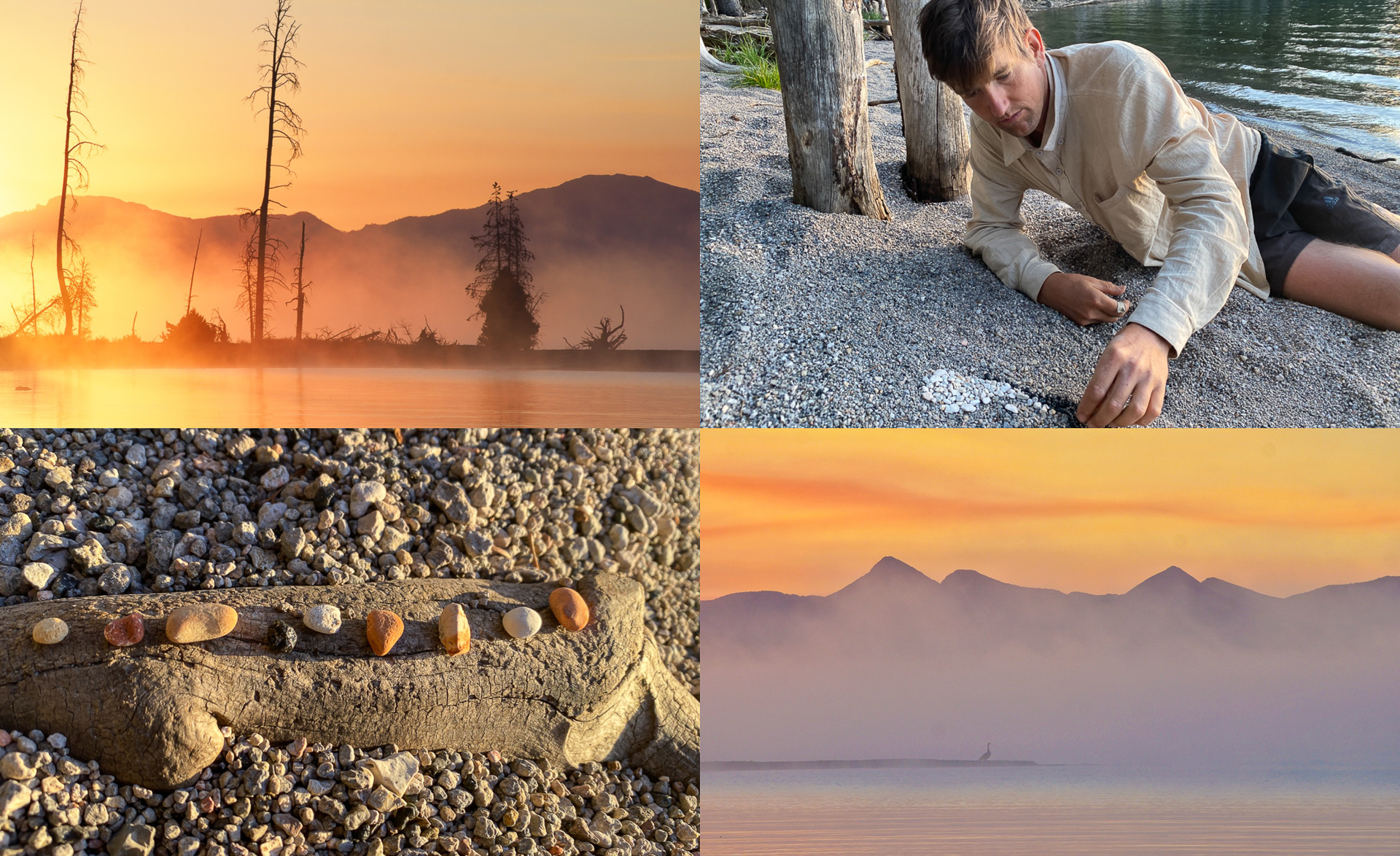
Day 3: Tasting wild yampa root, discovering a sneaky water cave, and other secrets of the Flat Mountain Arm…
We rise early from our base camp to explore the bottom reaches of Flat Mountain Arm. The water is almost tropical seeming in its hues of blue and green with golden dappled sunlight patterns.
Little George spots what looks like a small cave and cries “let’s go in there!” We discover an incredible little opening under a slab of stone big enough to pull the canoe in and then some. We hang there for a while watching the sunlight reflect off the water and onto the roof of the cave. Some sort of animal (otter? bobcat?) long ago piled sticks up into a kind of nest in the top corner on a ledge.
We stop on a sandy beach where the water is taking over the trunks of lodgepole pine trees, and spot otter tracks. At the bottom of the arm, we explore by foot, discovering grizzly tracks, moist meadows of fringed gentian, and dry fields filled with yampa (an important food source for bears and a traditional Native American food). George digs up a few roots for us to try, they taste like a yummy, starchy carrot. Along the small creek, the smell of mint is everywhere underfoot.
True to form, the waves rise on our return, and we practically surf the short distance back to camp. Even though we travel close to shore, we are glad to arrive back at our protected cove, where we hang on the shore and check out the next day’s itinerary. Jenny encounters a black bear while out exploring. The waves howl directly up the arm from the southwest. We are glad to be off the water!
Common mergansers fish our cove as the winds calm and the sun sets. We go back out for a quick, quiet paddle along the shore after the waves settle and discover a porcupine!
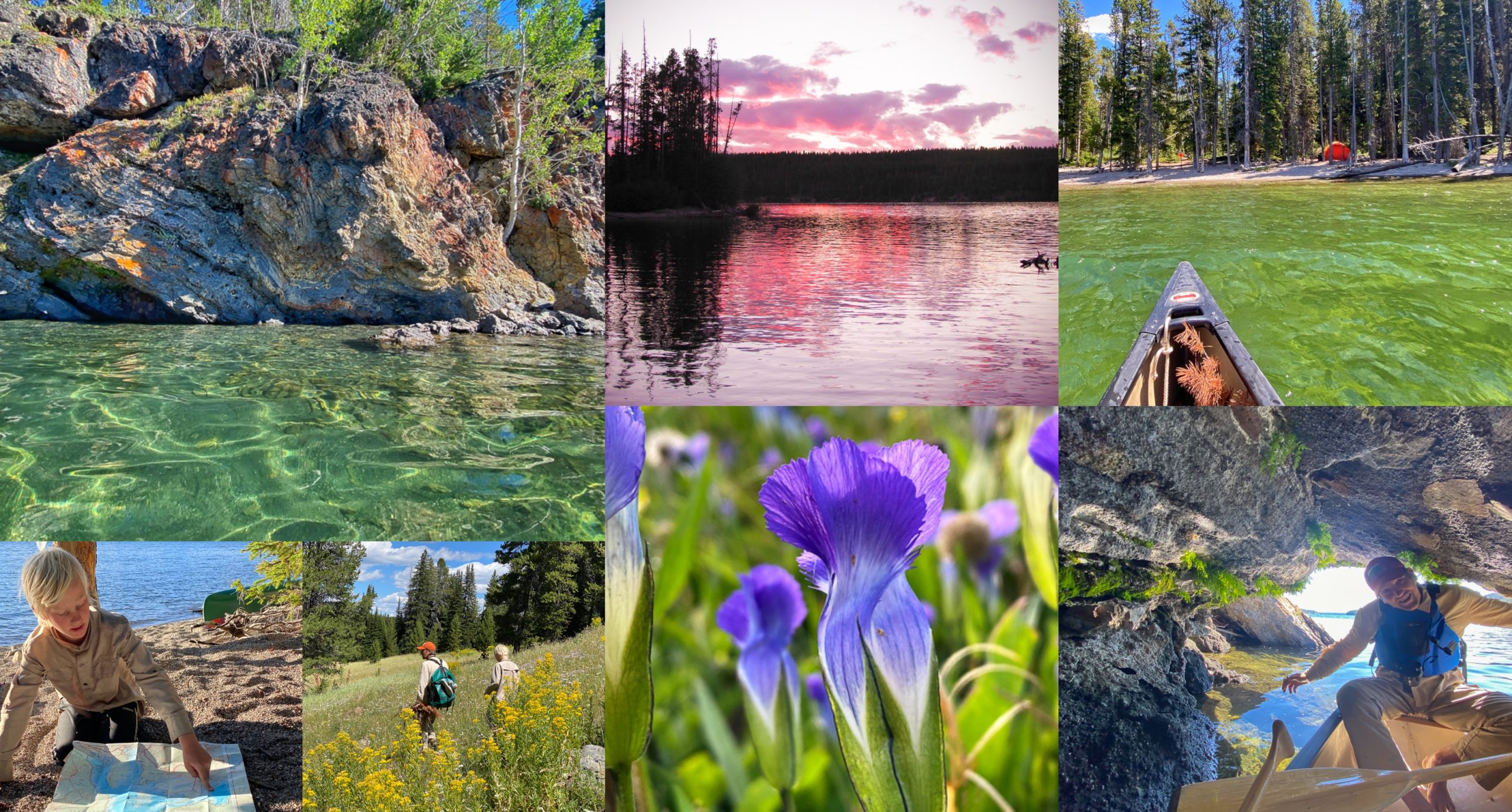
Day 4: Stars over the South Arm
Jenny brought along the “big” camera and a tripod in hopes of capturing the night sky, and our first night’s campsite in the South Arm was the perfect spot with clear skies and the Milky Way spreading north-south overhead. Little George decided to stay sleeping while the grown-ups braved the cold night air (there was frost the next morning) to attempt some night photos.
It’s hard to describe what being under a truly dark night sky in the middle of the backcountry is like. Just you, the small sounds of night creatures, the water gently caressing the shore, and eternity laid out overhead.
With the night sky shrinking in our world, it’s worth seeking out dark places to get a glimpse (https://darksitefinder.com/maps/world.html#3/36.95/-60.29). Yellowstone is one of those places where all the glory of the night is on display, and we are so deeply grateful.
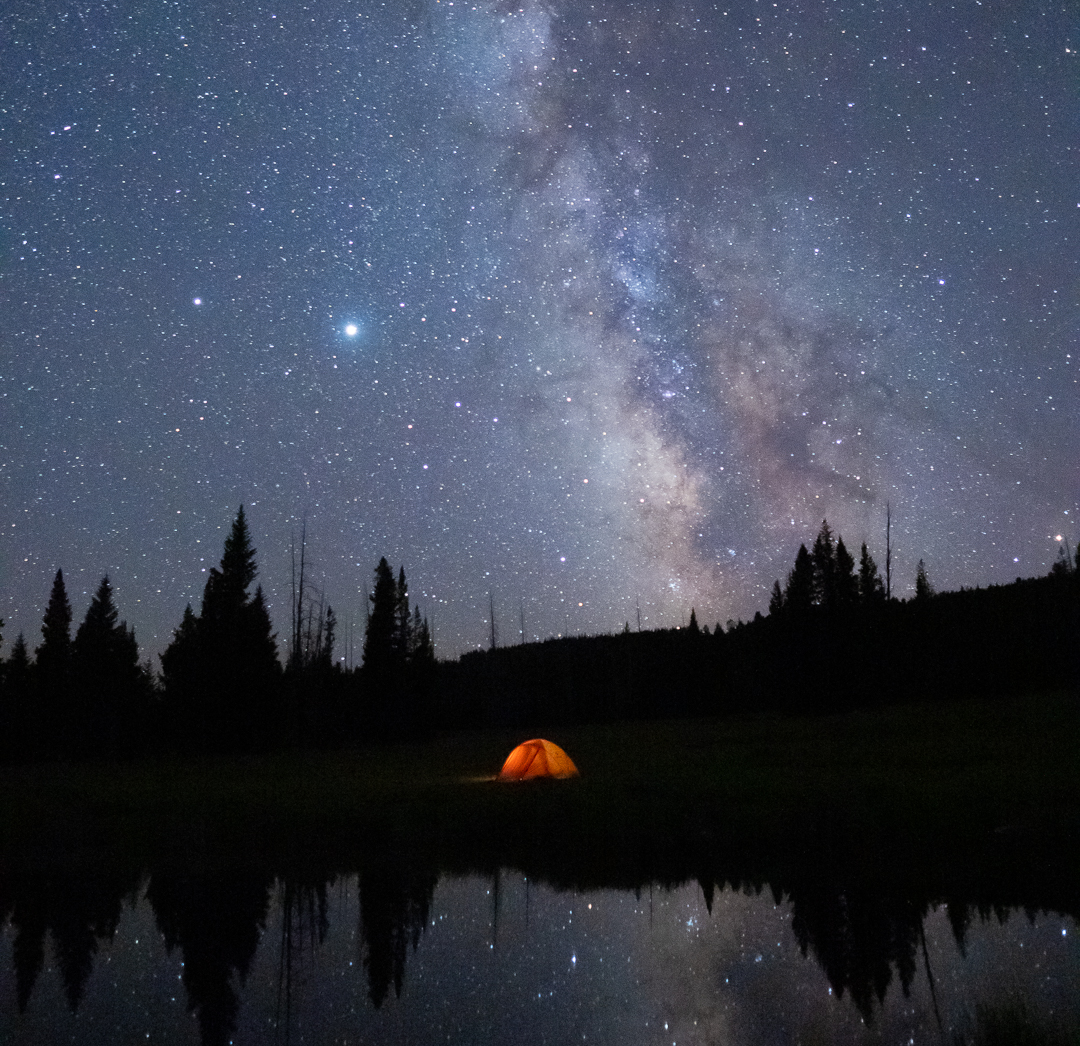
Days 4-6: Far from civilization on the South Arm
This. This moment right now is what we live for. The moment when all the traveling, arriving, setting up, organizing and doing is done and we are sitting quietly under the trees, calm, still, just being. Our shoulders relax and we become fully present. We feel the wind skipping across the lake to brush against our skin.
Big G is napping in the sun, LG and I are writing and drawing in our journals. The early afternoon sun filters through ancient lodgepole pines to warm a thick carpet of geranium, lupine, fireweed, and strawberry leaves. The sensory experience of cool wind, warm sun, the sound of ravens, geese, and willet, and the smell of the late summer flowers underfoot is nothing short of divine. These spaces in between the doing, these contemplative moments in nature, are soul restoring.
The moment described above is all real and true, and fortunately this trip we have had many such moments.
Lest you believe it’s all relaxation however, here’s the rest of the story of our days at the bottom of the South Arm.
First of all, Big G stabs himself in the eye with a tent pole when taking down camp on day 4. He was in a lot of pain, although there is no obvious trauma on the eye, so LG and I do the morning paddling while BG rests. While everything turned out okay, we were definitely thinking about exit strategies for a few hours…
Second, we arrive in camp to discover that most of the trees in the cook area–including the bear pole–have very large, fresh, bear scratches and climb marks. We always keep a clean camp and practice the utmost bear safety, but let’s just say we up our vigilance above even that! Walking a high meadow later in the day we spot griz sow and cub tracks in the dried mud, as well as a big bear day-bed, further driving home why off-campsite travel is prohibited in this area before July 14…
Third, somehow juice from lunch got all over the bag of almonds inside the dry bag, so we spend a while guarding a week’s worth of almonds with bear spray as they individually dry out on a log in camp. They now taste like African Peanut Stew…um, yum?
Fourth, the wind comes up strong and fierce the afternoon before our departure to the Southeast Arm, and we spend many hours on the beach watching the waves, which are too big to allow us to paddle over to explore Chipmunk Creek. The wind doesn’t let up until well after midnight, which is a change in the usual pattern so far. We have 12 miles to go the next day. George and I don’t get much sleep as the tent shudders and flaps in the wind and we lay awake pondering the implications of morning wind on a cold, deep lake…
Would we have it any other way? Never. Okay, well maybe we could do without the tent pole in the eye debacle. But it wouldn’t be wilderness without wild animals, wind, and other challenges. And the relaxation in the peaceful easy times wouldn’t be so sweet.
We wake at 5am on our departure morning to the sound of…silence. No waves! We hustle to get on the water and have smooth sailing until the Southeast Arm. Stay tuned…
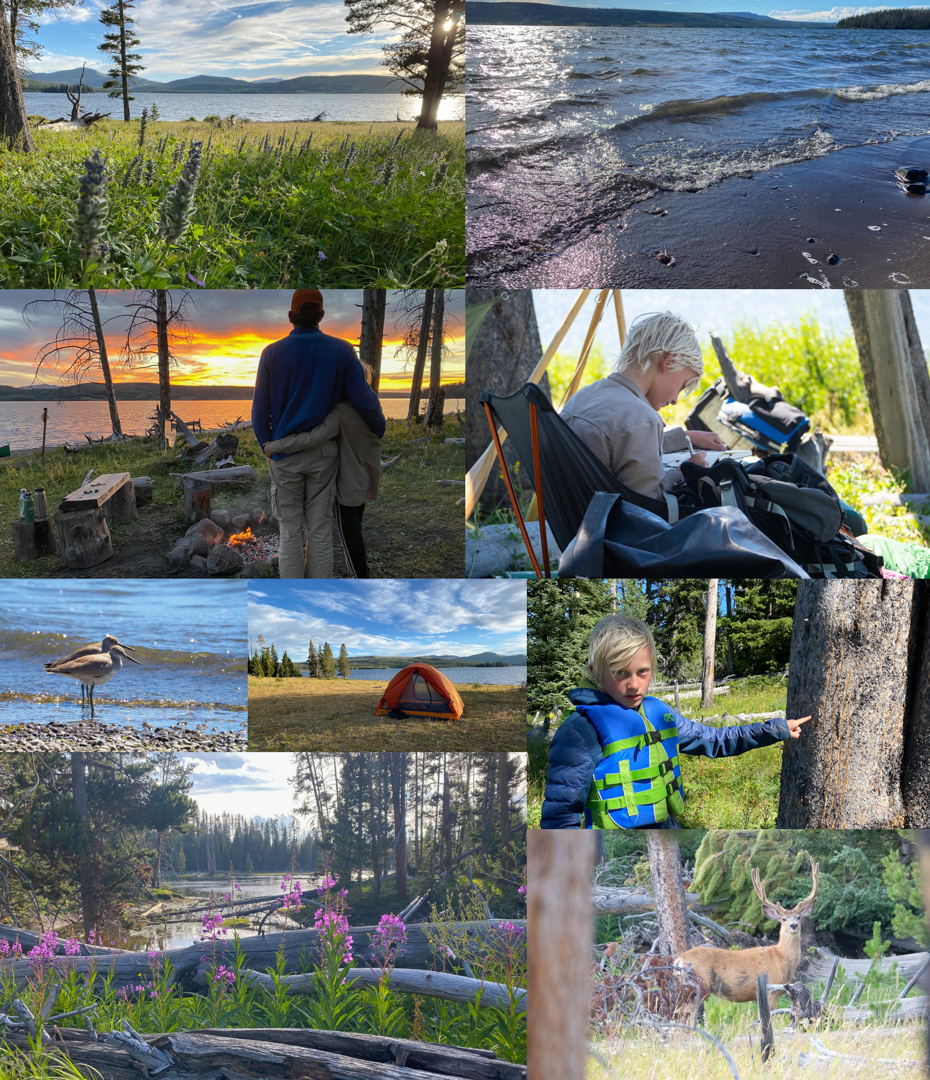
Day 7-10 The wild Southeast Arm
The anticipation is palpable. We have never been to the southeast arm and couldn’t be more excited. From the very first moment we round the tip of the Promontory, this arm proves to be wilder and less predictable than the others.
Because we would be traveling the western shore of the arm to get to our first campsite, we expect to be somewhat sheltered from the typical southwest winds. However, rounding the corner at 11am we were hit full in the face by winds coming from directly south, making an interesting paddle the last 3.5 miles to camp.
A black bear saunters casually through camp as we are setting up, just moving through. Fireweed and Indian paintbrush adorn fallen lodgepoles burned black from a recent fire. Every few minutes we hear a crash in the woods uphill from camp as another snag keels over.
Later, when we climb up on a shoulder of the Promontory, we see first of all that the arm is HUGE! The vastness is hard to comprehend. We also notice that the prevailing winds are indeed from the southwest, yet it seems there are wind and waves everywhere. We can see the delta where the Yellowstone River enters the Lake from the Thorofare.
The next morning we head to our base camp at the bottom of the arm, passing the Molly Islands on water smooth as glass. There is a HUGE, fresh grizzly track in the sand where we land the boat, and fresh grizzly tracks on the trail just beyond camp.
The next day is a layover, and we explore the bays and marshes of the Yellowstone River delta. It is an intensely wild place. There are thousands of birds, and evidence of beaver everywhere. We stop for lunch on a small island in the delta, and discover no fewer than 10 different sets of grizzly bear tracks, shifting slyly in and out of the willows thick with beaver trails and onto the soft sandbars. On the same island about an acre in size we discover the tracks of moose, coyote, otter, mink, crane, goose, sandpiper, beaver, swan, and elk.
Later, while walking the trail by camp, we notice yet another set of grizzly tracks in the soft dirt, so fresh we can see all the striations and patterns on the pad. All of a sudden the tracks stop and veer off at a small creek; we thought perhaps the bear had been in front of us and detoured to avoid us. We have our bear spray out and ready.
That night the George’s are sitting by the campfire when something large comes splashing through the water just on the other side of the willows in camp.
We are literally surrounded by bears. It’s an interesting mix of feelings, being in such deep grizzly country with obvious bear activity. On the one hand, it sets the hairs on the back of our necks on edge, keeps us close together, bear spray at the ready, and makes sleeping in the tent a bit less restful. On the other hand, there is a deep joy knowing they are here, living wild as bears should; that there are still places in the world where the animals are in charge and humans have to watch their step.
We never did see a bear, which was fine with us. We kept to ourselves and followed all the bear rules, and the bears went about their business. As it should be.
Only two more days to go!
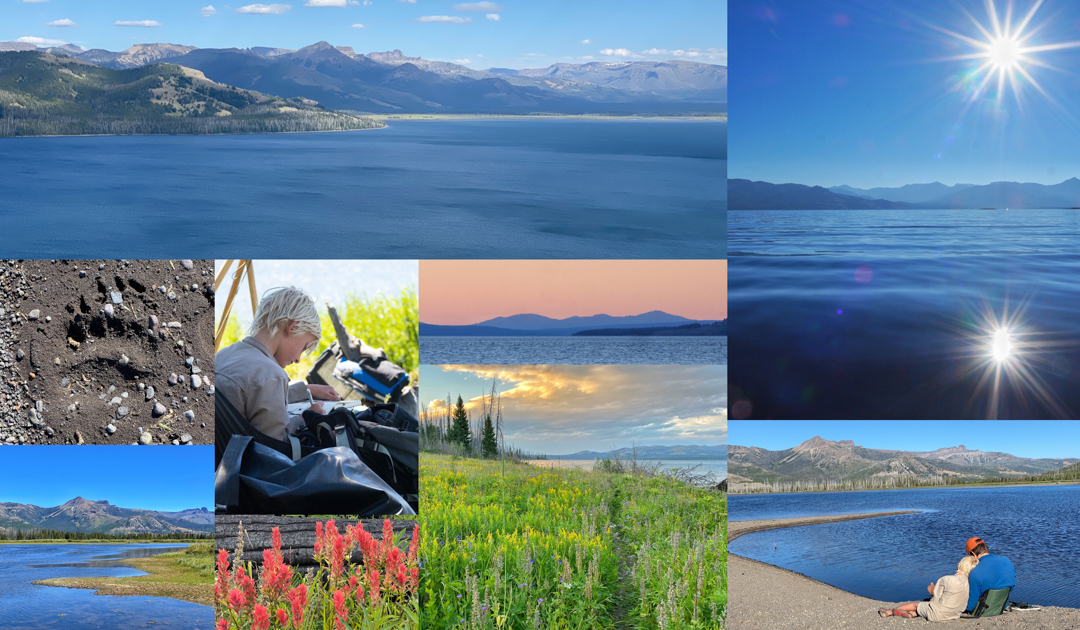
Days 10-11 The journey home…our last days paddling Yellowstone Lake
We have 12 miles to go today to get to our final night’s campsite along the eastern shore. The memory of standing at the tip of the Promontory and watching waves crashing in fits of white angry spray on the cliffs at Signal Point is more than enough motivation to rise early; we want to avoid the typical pile up of waves on the eastern shore at all costs.
We wake at 5am in the dark, and are on the water by 5:45, just as the first grey hues of daylight fold over the lake. The water is calm for the first few minutes as we paddle out of Trail Bay. Then we round the corner towards the Yellowstone delta and greet a moderately stiff wind. Coming from the east! Because of very shallow water around the marshes we have to stay a bit farther out than we would like to cross the not-insignificant distance from Trail Bay to the eastern shore.
It’s hard to express what it feels like to start the morning with wind and waves, knowing you have 12 miles to go to safe harbor. All.the.things. run through your head like: when are the wind and waves bad enough to beach for a while? If it’s this windy already what will the rest of the day look like? What if we capsized here? How would we self rescue? These things and more occupy our minds as we dig in and paddle hard to get to the eastern shore, where we expect to have calmer water, since the wind is currently backwards.
We get a respite on the eastern shore for about 30 minutes, before the southwest winds kick up. George navigates in the stern as rollers (not whitecaps yet) greet us from the rear and side. He grew up on big lakes in upstate New York and is more comfortable than I with *some* wind and waves. For me the slightest breeze conjures up images of hurricanes and Death in Yellowstone chapters…
We stick close to shore and ease the boat through the swells. George tells me I don’t have to say “switch!” every time my arms get tired and I want to change sides, but I tell him it makes me feel better anyway, so he humors me. We take only a couple of short breaks along the way, and the waves grow larger. George says at least our stuff will get washed to shore if we capsize (instead of out into the Lake), as we surf in towards the no wake boundary at the head of the arm. Somehow I don’t find that very reassuring.
It’s the cliffs around Signal Point we’re most worried about, and we watch as they get closer, evaluating the conditions so that we can beach and wait it out if necessary. When the decision point comes the waves are building, but still manageable, and there is surprisingly little wind. George asks me if I’m comfortable giving it a shot, and after evaluating the conditions, our skills, and exit strategies carefully, we decide to go for it.
The waves come from the southwest and bounce off the cliffs and back out to the lake, making the surface feel like water sloshing in a teacup. George keeps the boat on top of the waves, and I dig in and paddle forward, counting in my head in increments of four, switching on count 32. Why? No reason except it keeps me calm. Meanwhile, LG falls asleep in the middle of the boat. Seriously!?
Finally we round Signal Point and surf gently into camp. I plop out off the boat and collapse with relief the shore, and George is calm and collected. ” Were you even nervous?” I ask him. “I was focused” he says. (He is used to me overreacting just a bit when it comes to waves). Little George says in a sleepy voice, “are we here already?”
It’s 9am. We’ve just traveled 12 miles.
By 10:30am the Lake is smooth as glass and remains that way for the next 24 hours at least. What the heck????? We get up at 5 in the morning to avoid waves, and end up paddling in the only waves of the day!
The water is so clear and smooth and gorgeous the we spend the rest of the day swimming and then laying on the sun heated pebbles on the beach. LG and I call it our “hot rock massage” as we lay warm rocks on our bare skin to warm up. Rinse, repeat. Later, Big George and I go back out for a sunset paddle along the cliffs, the water so very magical in the evening light. It’s like the Lake is wishing us good tidings after all.
The next morning we paddle 6.5 miles to Sedge Bay. Little George talks of getting pizza, seeing his friends, and which movie we will watch tonight. I am excited for a shower. We are all looking forward to seeing Hobbes. Yet after our family photo Big G and I stare longingly back out at the Lake, knowing we could stay another two weeks in a heartbeat.
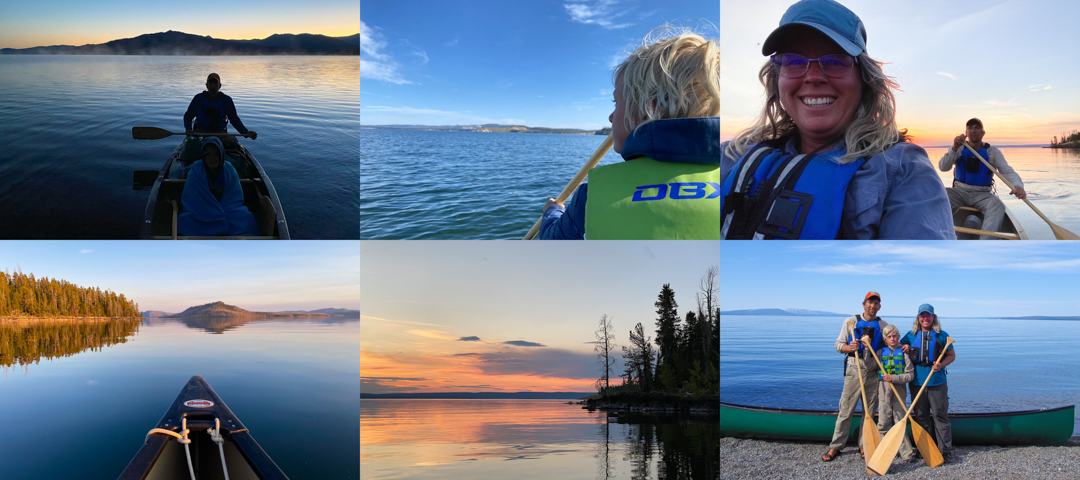
So you want to paddle Yellowstone Lake?
If you’ve been following along on our 11 day canoe trip paddling Yellowstone Lake from Grant to Sedge Bay, here are some additional details to help if you are interested in planning such a trip. While the trip reports and images might make it all seem like an idyllic adventure, the truth is in the details.
Paddling on Yellowstone Lake is a serious backcountry endeavor. The usual hazards that have to be taken into consideration anytime you’re in the backcountry apply: being prepared for wind, sun, rain, snow, cold, bears and other wild animals, and how to respond in an emergency without access to cell service. Add to that the unique conditions on Yellowstone Lake: extremely cold and deep water and often unpredictable weather.
One of the things we didn’t elaborate on in individual posts is our safety and decision making. We evaluate conditions constantly. We communicate. We know our skills and our limits. We know the hazards and dangers of the backcountry, and the specific hazards of the lake. We always have an exit strategy. And if all these things fail, and accidents still happen, we are prepared with wilderness first aid, self rescue plans, emergency shelter, etc. We have also been paddling together for 20 years, and are very comfortable traveling long distances in a canoe.
We say all this only to emphasize that a trip on any of Yellowstone’s Lake should not be planned lightly, and sometimes social media can lead to unrealistic expectations. If you don’t have the requisite gear and backcountry experience, then we recommend hiring a guide who does, or taking time to get the experience elsewhere before you try your skills on the Lake.
When you’re ready, there are a number of resources to learn more about paddling on the Lake, including:
Paddling Yellowstone and Grand Teton
Yellowstone’s Backcountry Trip Planner
Permits are required to camp in Yellowstone’s backcountry, and you also need a boat permit and an aquatic invasive inspection.
If you are an experienced paddler and understand Yellowstone’s unique conditions, then perhaps our tips will be helpful to you.
We chose to base camp two nights in each arm, and to avoid any open water crossings (a HUGE hazard on the Lake). You could certainly shorten the trip by skipping the layovers. Also, you don’t have to paddle end to end like we did. In fact, we often take the backcountry boat shuttle offered by Yellowstone National Park Lodges to skip straight to the good stuff and be able to spend more time in the arms.
On travel days, we ALWAYS were on the water by 7am if not before, and off the water by 11:30am at the latest. This gave us plenty of relaxation and exploration time, as well as ensured we were never on the water (for the most part) when waves and wind were typically present. We were extra careful about this because 1. We were traveling in a canoe which is a lot less forgiving in wavy water than a kayak, and 2. We were not traveling with another party who could help rescue us. A big part of our decision making was avoiding situations that could get us into trouble in the first place!
Some things we will change for next time:
1. Bring a few extra meals. Normally I (Jenny) always pack too much food, but this time we had *just* enough. Literally, we ended the trip with one bag of granola, a couple of bars, and 3 questionable Baby Bells. It’s nice to have a little extra to nosh on, as well as in case of emergency. I also didn’t plan in a yummy meal like home-made cinnamon rolls, or pancakes, popcorn, or pizza; I think I just got overwhelmed by making sure we had enough food for 3 people for 11 days (that’s 99 meals and 99 snacks, y’all!).
2. Have a waterproof case and a tether for any important devices (duh) as well as an actual hardcopy book!
3. Include a solar shower!
4. Bring a packable blanket for really cold nights
5. Split the food into multiple smaller dry bags instead of one really big and heavy one. Hanging the food on the bear pole the first few nights was interesting!
6. Bring a spotting scope when visiting the South or Southeast arms
Why do we take a canoe instead of a kayak?
First of all, we love canoes and are comfortable in them. Second of all, you can carry a ton of stuff! It’s serious luxury for the backcountry. Like three people and 11 days of food, plus a ukulele, full set of camera gear and tripod, camp chairs, a palatial tent, etc. We usually bring a cooler too but didn’t have room this time. And we still averaged 3.5 or more miles per hour.
Hope that helps! We are happy to answer questions for anyone thinking of trying a trip on Yellowstone Lake, just send us an email at info@ayellowstonelife.com.
You can also check out another paddling story here:

Thank you so much for following along on our journey!
Images ©Jenny Golding/A Yellowstone Life

